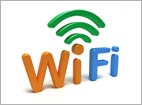The big news two weeks ago was that the Federal Communications Commission (FCC) voted to institute net neutrality rules that administer broadband as a public utility. At that time, however, the rules themselves were not published. Today, all 400 pages (along with dissenting opinions) were made public.
The public information points to three elements of the FCC’s action: to prohibit blocking, throttling (slowing of certain data streams) and paid prioritization. The essential question that various parties asked before and after the announcement on February 26, was whether the use of Title II—the mechanism under which broadband now will be regulated—is in essence using a baseball bat to do what could just as well be done with tweezers.
Lawyers, lobbyists and journalists will surely go through the entire document, which will take a bit of time. So we will surely hear more about the intricate details of the document. However, some, who’ve apparently taken speed reading courses, are pointing to high-level themes in the fuller rules. Title II is a very wide ranging entity, but the question of whether the FCC would utilize it in a deep manner or pick its spots was answered today.
Jacob Kastrenakes at the Verge suggests that the light approach, which was promised by FCC Commissioner Tom Wheeler, is indeed ensconced in the rules:
One of the big questions this document answers is which Title II regulations the commission won’t be applying to internet service. It turns out to be quite a lot: more than 700 rules aren’t going to be applied. ‘This includes no unbundling of last-mile facilities, no tariffing, no rate regulation, and no cost accounting rules, which results in a carefully tailored application of only those Title II provisions found to directly further the public interest in an open internet and more, better, and open broadband,’ the order says. The idea that this proposal is a so-called ‘light touch’ approach to regulation has been touted again and again, basically as a way to quell concerns from those who oppose regulation. Of course, it hasn’t exactly done that, and we’re still seeing plenty of complaints from the internet providers that are now having their services classified under Title II.
The question now becomes about “mission creep” under this or subsequent administrations. The current approach features a minimum of oversight, but it puts in place a level of power that could be easily leveraged in the future. Of course, it always is possible to put in new rules that do things such as control prices and contractual relationships. However, it is much more easily done if the power to do that lies dormant within already implemented rules.
So, even with the apparent sensitive touch in today’s document, skeptics are right to say that the dangers they pointed to previously have not been eliminated. The FCC has said that it is exhibiting “forbearance,” which is regulatory jargon for a mostly hands-off policy, in how it implements Title II.
The fear that it is a regulatory wolf in sheep’s clothing was nicely put in a quote from Republican FCC commissioner Michael O’Rielly that was posted at Silicon Republic:
“But make no mistake: this is not some make believe modernized Title II light that is somehow tailored to preserve investment while protecting consumers from blocking or throttling. It is fauxbearance.”
The full text of the rules is available at the FCC site.
Carl Weinschenk covers telecom for IT Business Edge. He writes about wireless technology, disaster recovery/business continuity, cellular services, the Internet of Things, machine-to-machine communications and other emerging technologies and platforms. He also covers net neutrality and related regulatory issues. Weinschenk has written about the phone companies, cable operators and related companies for decades and is senior editor of Broadband Technology Report. He can be reached at [email protected] and via twitter at @DailyMusicBrk.




